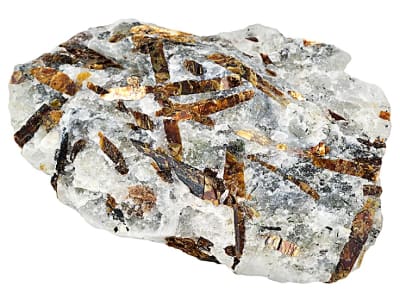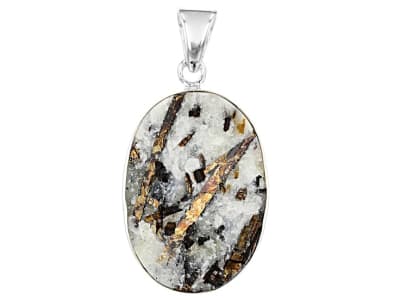Astrophyllite is golden-yellow to dark brown and usually forms as bladed crystals radiating from a common center. It gets its name from the Greek astron, meaning "star," and phyllon, meaning "leaf." It may also be translated as "star sheets" because of the interwoven star shapes that crystals sometimes form, and because of its strange luster, which can be metallic or pearly. Although there are occurrences of astrophyllite around the world, some of the finest crystals come from remote mountainous regions in arctic northern Russia.
General Information
Astrophyllite Colors
-
 Brown
Brown -
 Green
Green -
 Yellow
Yellow
Countries of Origin
Russian Federation; Guinea; United States of America; Egypt; Madagascar; Kazakhstan; Portugal; Mongolia; Pakistan; Morocco; Unknown; Malawi; Mali; China; Brazil; Slovakia; Chile; France; Nigeria; Kyrgyzstan; Romania; Ukraine; Spain; New Zealand; Canada; Mauritania; Norway; Namibia; Finland; Denmark; South Africa; Greenland; Tajikistan; Yemen
Care
Astrophyllite is brittle so please take care when handling.


